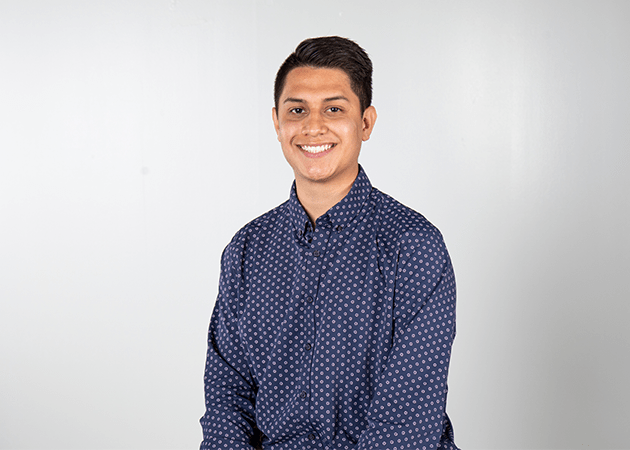FRISCO, Texas — 2019 has put Reggie Cannon in a position he’s never been in before at the international and club levels — he's becoming a leader.
Cannon saw a breakout 2018 season result in multiple call-ups to the U.S. National Team, one of which was being included in the country’s Gold Cup roster — even if it was as the last man. He took that opportunity in stride.

His confidence wasn’t the highest when first called up in June, and he admittedly let the fact of being the last man on the roster get to him a little bit while in training. That doubt in his head turned into a sense of belief and confidence, which grew more and more inside of him once U.S. head coach Gregg Berhalter substituted him into the team’s second match of the tournament against Trinidad and Tobago.
Cannon then started in three of the last four games in the Gold Cup, including the tournament’s final against Mexico. He played all 90 minutes in a 1-0 loss in what was one of — if not the — best performances he’s ever had. Mexico’s Rodolfo Pizarro, who started on the same side as Cannon, was forced to switch to the opposite wing because he struggled to produce when marked by the U.S. defender.
The FC Dallas Homegrown was one of the few bright spots in the team in what was a disappointing result for the nation, overall. His Gold Cup experience was not only crucial for his own development, but also FC Dallas’ and the national team’s.
At 21 years old, Cannon already has more national team and club experience than most players his age in America. He’s an FC Dallas staple at right back, and he took that Gold Cup experience back to Dallas, where he has become one of the leaders of the team.
Already, during the national team call-ups for the Mexico and Uruguay friendlies, Cannon has gone out of his way to ensure that the new guys on the team are settled in properly. He's making sure their transitions go smoothly — starting with one of his teammates from FC Dallas.
“We’ve been trying to get Paxton [Pomykal] ingrained into this national team system,” Cannon said. “I offered to room with him. Josh Sargent is pissed off at me because of that. I really wanted to integrate him and give him the most success he could have possible with the national team because I really do believe that he’s the future. People like that, with the amount of talent that he has, it’s really important to get them settled quick and give them the confidence that they need.”
Sure, there are older and more experienced players that the U.S. has available during the two friendlies in September, but Cannon has played with a lot of the younger guys before on youth teams.
He has the unique opportunity to be the bridge between U.S. Soccer’s transition from the last generation to the next. That’s a huge help for Berhalter, who is in the beginning of his tenure as national team head coach.
The U.S. roster could also feature a number of FC Dallas players during the next World Cup cycle, a possible trend in this next cycle that all started with Cannon showcasing what his domestic club can produce for the future of American soccer.
He, along with Pomykal and Jesse Gonzalez are the three FCD representatives during this international break, and there could possibly be more on the way by the time the 2022 World Cup arrives.
“The impact FC Dallas has had over at least four people at camp — everyone has at least touched the FC Dallas Academy,” Cannon said. “I think it’s five, actually, that have been in the FC Dallas Academy at one point. That’s super important that, FC Dallas, they have an imprint on this.”
Brandon Servania, Edwin Cerrillo and Jesus Ferreira could also possibly be in the mix by the time the next World Cup comes around. Right now, Cannon is already taking the steps he thinks are necessary to have an impact on future national team players — Pomykal’s current situation is one example.
Pomykal’s quick rise to stardom has been a significant one for FCD, which has found a consistent producer from its midfield. Cannon said he’s seen massive improvement and growth from his FCD teammate.
“I think it’s definitely different from the beginning of the year, not starting, to becoming one of the star players for FC Dallas, and becoming one of the MLS All-Stars and best players in MLS,” Cannon said. “It’s a process. He’s really climbed up that ladder, and he’s starting to really build his resume for soccer. So, I think that’s really important. He’s really developing into quite the player in this national team, and this is just the next step for him.”
The advice he’s been giving young players on FC Dallas is almost identical to what he has been told before while coming up through the youth system ranks in North Texas and in the United States.
Individuals like John Brooks, Michael Bradley and even Weston McKennie have helped Cannon along the way, and now he’s trying to leave that same impact on the future of U.S. Soccer — teammates that will play beside him for years to come.
“The average age, it’s pretty young for this camp,” he said. “I think Gregg is really trying to get people situated and get into the concept of the national team. People have different paths, different timelines, but the youth is coming — the youth wave is coming. We’ve got a lot of talent — a deep, deep pool of talent. I’m really excited to see Sergiño Dest play, to see Paxton play. I’m super excited for those guys, and when they get their opportunity, they’re going to do great.”




